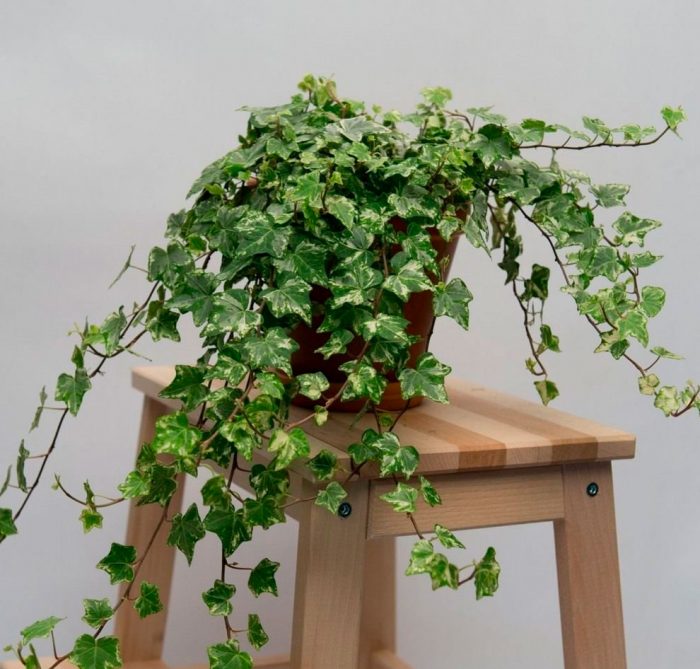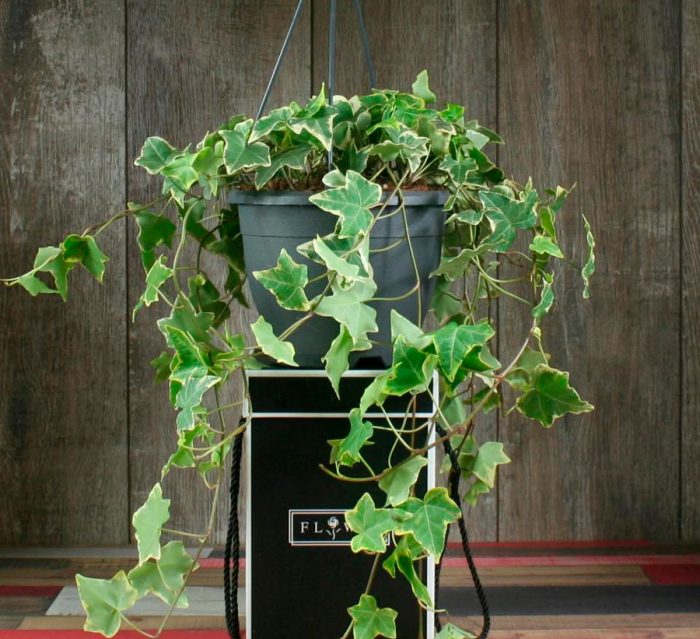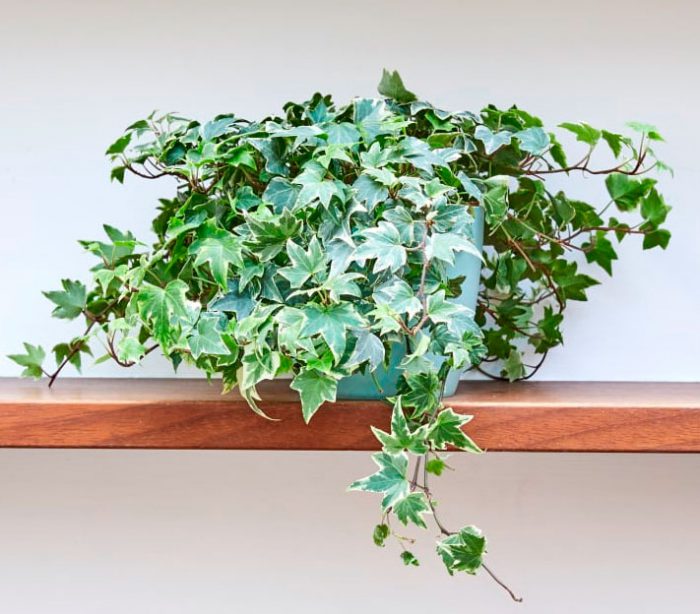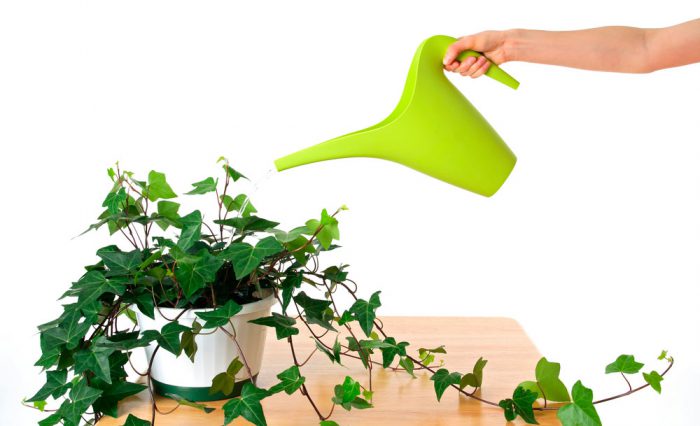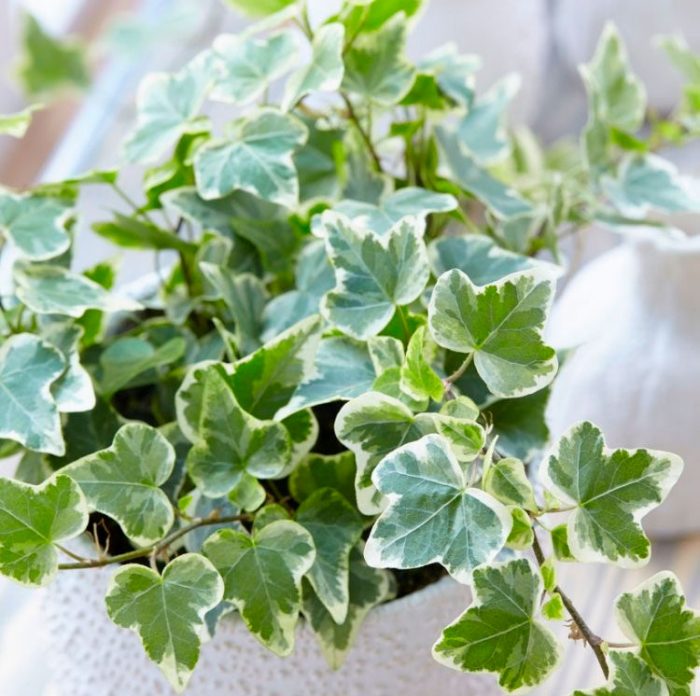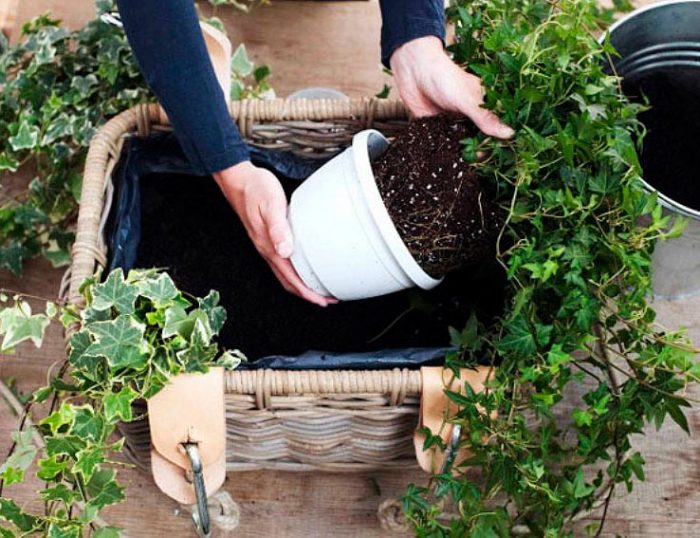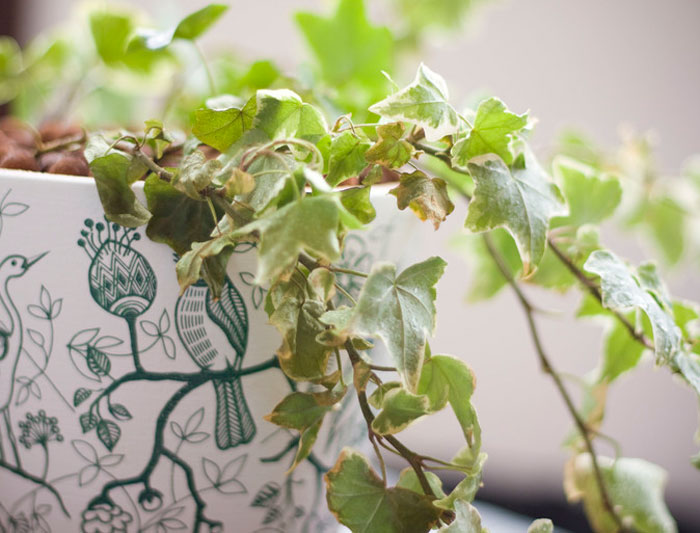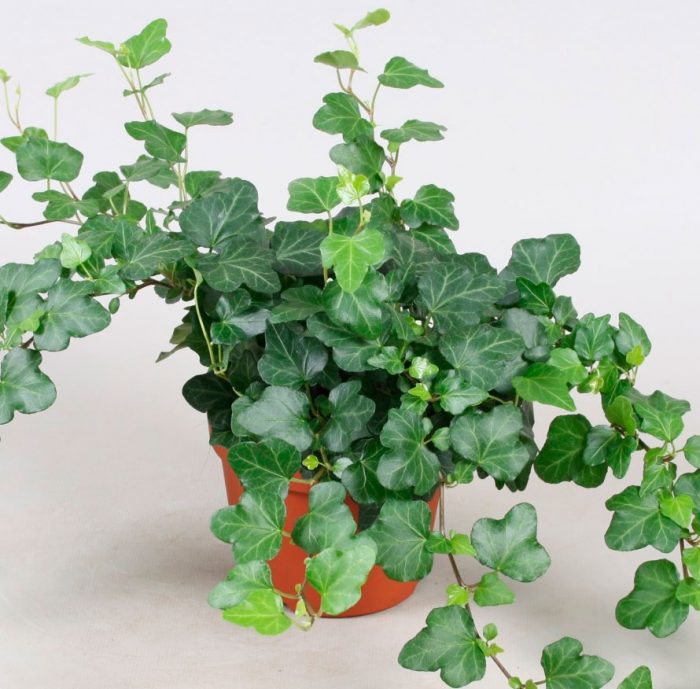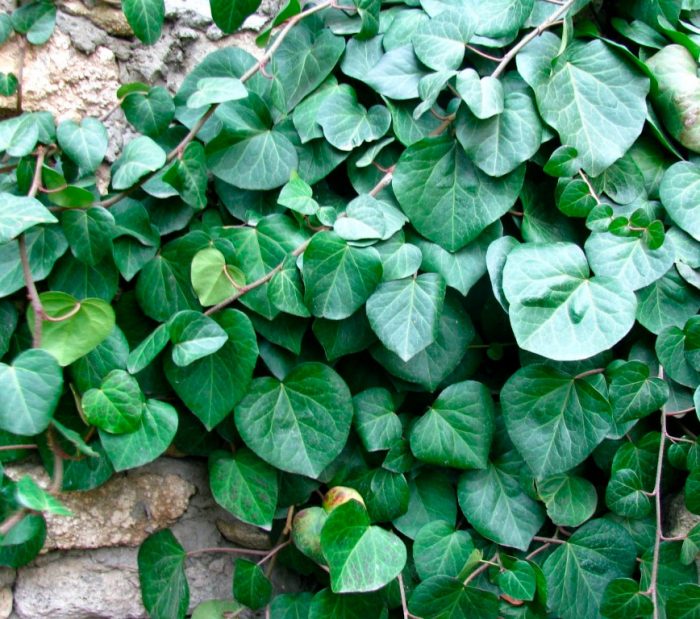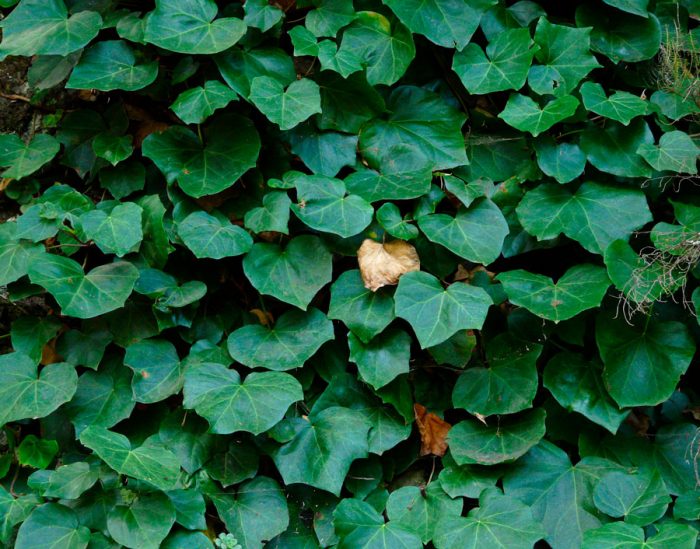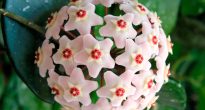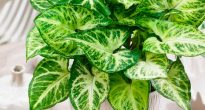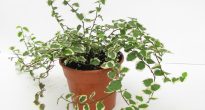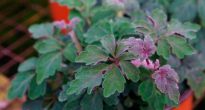Humanity has learned about the existence of ivy (heders) for a very long time. In ancient Greece, it was used to weave wreaths that adorned the head during a feast. But in ancient Egypt, such a plant belonged to the objects of worship and was a symbol of immortality. In those distant times, people were sure that if a heder branch was placed on a sleeping woman's chest, then thanks to this she would remain young and beautiful longer. The mention of ivy can also be found in works of art: on the grave of Isolde and Tristan, a vine and a whip of ivy intertwined with each other.
This plant makes the indoor air much cleaner, as it is able to absorb various harmful and dangerous fumes. In this regard, experts advise, be sure to decorate your kitchen with a chedera.
Content
Brief description of cultivation
- Bloom... Grown at home as an ornamental deciduous plant.
- Illumination... For varieties with variegated leaves, it is necessary to provide bright, but diffused lighting, and slight shading is also acceptable. Green-leaved varieties grow well in shade or partial shade.
- Temperature regime... During the growing season from 22 to 24 degrees. A cool winter is recommended, but the room should not be colder than 13 degrees.
- Watering... Moisten the substrate moderately and systematically.
- Air humidity... High. The bush must be moistened every day with a spray bottle. At the same time, during warm wintering, it is recommended to pour wet pebbles into the pallet.
- Fertilizer... Top dressing is carried out in March – August twice a month; for this, a complex mineral fertilizer is used for indoor decorative leafy crops.
- Dormant period... In the winter time.
- Transfer... Young bushes are subjected to this procedure regularly once a year. Older plants are transplanted only when necessary, for example, if the roots do not fit in the pot.
- Reproduction... Most often, heder is propagated vegetatively: by shoots, layering and apical cuttings.
- Pests... Scabbard, spider and cyclamen mites, greenhouse thrips, aphids, pseudo-scale insects and mealybugs.
- Diseases... If the rules of care and conditions of detention are violated, the decorativeness of the plant suffers.
Features of the header
General information
The Hedera plant is also called ivy, it is part of the Araliaceae family. In the wild, this evergreen climbing shrub can be up to 30 m long. In total, experts have found about 15 species of hedera, which are found in nature in Asia, North and South America, Europe and Africa. Moreover, they prefer to grow in the subtropics, and are most often found in moist shady forests.
People have learned about the existence of heders a long time ago. Among the ancient Greeks, she was a symbol of love and fun. Ivy was also considered a plant of Bacchus, so poets decorated their heads with wreaths from heder at various feasts and celebrations. Ivy is also often used as a medicinal plant to treat various diseases.
Today, this plant is very popular with designers, while it has found its application both in floristry and in the design of garden plots and premises. Heder is also very popular among flower growers, because it is undemanding to care for and unpretentious.
Indoor ivy description
Indoors, the most commonly grown species is the Hedera helix. On the underside of climbing shoots, there are many air roots, which are collected in a dense brush. It is these roots that the plant uses to fix it on a support. Simple lobed alternate leaf plates are glossy and leathery to the touch. They are painted in a dark green shade, and their veins are lighter in color. There are forms with variegated foliage. One leaf plate may have 3–7 blades.
Hedera blooms only in natural conditions, while corymbose, umbrella-shaped or racemose inflorescences, consisting of small yellowish-green flowers, are formed in it. The room heder has more than a hundred different varieties, differing in the shape of the leaf plates, their size, and also in color.
Why is a header useful, and can it be kept at home
The benefits of heder
People have learned that hedera has medicinal properties a long time ago. The plant is widely used in alternative medicine, and it is also used as a raw material in the production of cosmetics and medicines.
Ivy wood contains a substance that effectively relieves spasms, this has been proven by scientists. This substance is used in the manufacture of drugs used in the treatment of acute bronchitis. The foliage of such a plant has antitumor, expectorant, antifungal and antimicrobial effects. On the basis of wood and leaves, heders make softening gels, which are used as an additional agent during the treatment of obesity, purulent dermatoses and cellulite. When growing ivy in your home, remember that its fruits contain a strong poison that can contribute to the development of poisoning!
Signs
As for popular signs, the hedera is considered a muzhegon plant and an energy vampire. Also, people say that she, like a magnet, attracts loneliness and various troubles to the dwelling and its owners. Because of this, many gardeners do not dare to decorate their home with ivy. However, to believe these signs or not, everyone must decide for himself.
On the contrary, in ancient Rome and Greece, this plant was considered a symbol of family happiness and fidelity, and in eastern countries it is still believed that hedera is a source of vital energy.
The best place for a heder is in the kitchen. There she will definitely have no time to absorb the life energy of the residents (not the fact that she does it at all!). But what it definitely absorbs is various harmful impurities and toxins contained in the air, making it cleaner and safer for humans.


Watch this video on YouTube
Caring for the chedera at home
Lighting
Among the many useful properties of heders, there is such as high shade tolerance. Few indoor plants can boast of this. In this regard, such a plant can be grown in the depths of the room and this will not negatively affect its development and growth. But note that forms with variegated foliage need a lot of bright light, otherwise their leaf plates acquire a solid green color.
Watering
What sways watering, and here the header is distinguished by its undemandingness. It can withstand a short drought much easier than stagnant liquid in the substrate. That is why this plant is considered ideal for those who often have to leave home for a long time.
But you still need to water the plant. Remember that with regular drying out of the earthy coma, at first the edges of the leaf plates turn brown, and then after a while they dry up and die off.
It is necessary to moisten the substrate in the warm season so that it is slightly damp all the time. In winter, watering is carried out only after the top layer of the soil mixture in the pot dries out a little.
Air temperature
Hedera reacts extremely negatively to high temperatures and low air humidity. The optimum temperature for her is 22-24 degrees. For the winter, it is recommended to rearrange it in a cool place where the air temperature does not fall below 13 degrees. If, in winter, the bush is warm, and even not far from a working heating device, then this can cause a loss of decorative effect: the shoots will stretch out, while the gaps between the leaf plates will noticeably increase. If, nevertheless, the plant hibernates in the warmth, then it must be watered on time, and also moisten it every day from a spray bottle with well-settled soft water. Also, during warm wintering, it is recommended to put a container with a flower on a pallet filled with expanded clay or pebbles, and a little water is also poured into it.
If the room temperature is excessively high in the warm season, then it is recommended to regularly and often humidify the heder. She can also regularly arrange a warm shower, which is also used for hygiene purposes.
Top dressing
Top dressing is carried out only from the beginning of spring to the end of summer with a frequency of 1 time in 15 days. For this, a mineral complex is used for decorative deciduous plants. In no case do not overfeed the flower, because because of this, its leaf plates can become very large, which will negatively affect the decorative qualities of the heder.
Heder transplant
Indoor ivy should only be replanted if absolutely necessary. For example, when the root system does not fit in the pot and begins to "peek" out of the drainage holes, or the plant stops growing and developing.
On average, young bushes are transplanted once a year, and older specimens are transplanted once every 2 years. Old bushes may not be replanted at all. Instead, they replace the top layer of soil mixture in the pot with fresh substrate annually.
Hedere is best suited for a soil mixture consisting of leaf, peat, humus and sod soil, and also sand (the components are taken in equal proportions). It is transplanted at the end of the dormant period, approximately in March – April. The new pot should be 20-30 mm larger than the old one. Do not forget to make a thick drainage layer at the bottom of the container.
Water the flower abundantly shortly before transplanting. After that, it is carefully transplanted into a new container, trying to keep the clod of earth intact. The transplant is carried out by the transshipment method. Pour enough fresh potting soil into a new pot to fill any voids. In a transplanted bush, the surface of the substrate is slightly compacted, then it is well watered and moistened with a spray bottle. Place the ivy in a permanent place, protecting it from drafts and direct sunlight.


Watch this video on YouTube
Reproduction methods
As a rule, indoor ivy is propagated only vegetatively: by shoots, cuttings and layering.
Cuttings
For propagation of such a plant, apical cuttings are used. To do this, the upper parts of the stems are cut from the bush, which reach about 10 cm in length. They should be planted in a soil mixture consisting of leafy soil and sand. Cover the cuttings with a glass jar or cut plastic bottle. The optimum air temperature for rooting is from 15 to 20 degrees. Keep the substrate slightly damp (but not wet) at all times. Those segments that already had air roots take root the fastest.
After rooting is complete, take a pot filled with substrate for an adult heder (see the "Transplant" section) and plant several cuttings there at once. By the way, you can use a glass of water to root them.
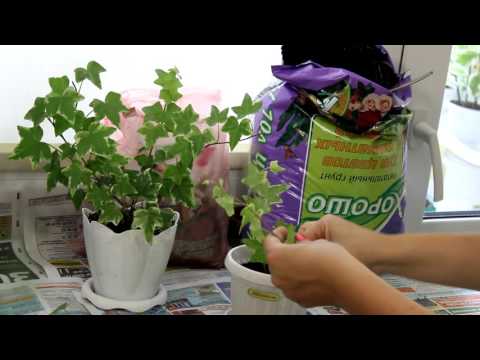

Watch this video on YouTube
How to propagate by shoots
Heder is propagated in another way: for this, several bushes are grown from one shoot at once. Cut off the stem, which should have 8-10 leaf blades. Make a longitudinal cut along its entire length with a sharp instrument. Place the stem with a notch down on the surface of the sand, after which it is lightly pressed into the soil mixture to a depth of 15 to 20 mm. At the same time, make sure that the leaves rise above the surface of the soil mixture. Keep the substrate slightly damp throughout the rooting period.
Within 15 days, roots should grow along the entire length of the stem. If rooting is successful, then the top of the stem will begin to actively grow. Remove the stem from the sand and divide it into several parts, each of which should have at least 1 leaf plate and roots. Take pots that are 70–90 mm across and plant three pieces in each of them.
Layers
Pick one healthy, well-developed shoot and make a longitudinal incision on its underside. Place the stem on the surface of the soil mixture next to the parent bush and fix it in this position with a hairpin or bracket. After the roots grow along the entire incision, the cuttings are cut off from the mother plant and planted in a separate container.
Possible problems
Hedera is distinguished by a fairly high resistance to diseases. But in the event that you systematically violate the rules for caring for a plant, then problems may arise with it, for example:
- Poor lighting... This leads to the fact that the leaves of variegated varieties lose their unusual variegated color and become simply green.
- Regular drying out of the earthy coma... This can lead to massive foliage loss.
- Low air humidity... Leaves become smaller and less on stems that look bald.
Due to poor care, pests can also settle on the flower, for example: scale insects, aphids, spider mites or cyclamen mites. Most often, excessively low humidity in the room contributes to their appearance. To get rid of pests, treat the bush with Aktellik (for 1 liter of water from 1 to 2 milligrams of the product). The solution of Aktara or Karbofos also copes well with pests. If necessary, re-spray after 3-4 days. If, in this case, pests remain on the bush, then simply rinse the leaves of the bush in a basin with a solution of a pesticide.
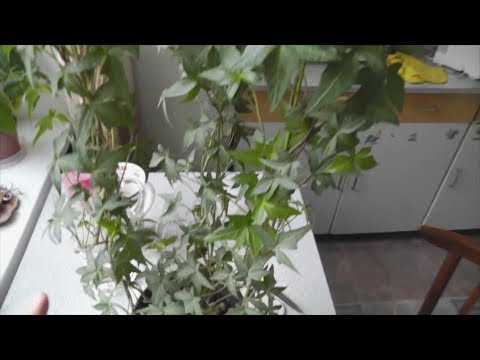

Watch this video on YouTube
Types and varieties of heders with photos
The types and varieties of heders that are most popular with flower growers will be described below.
Hedera ordinary (Hedera helix)
This creeping lithe vine is evergreen. Its simple alternate leaf plates are three to five lobed and leathery to the touch. They have a dark green color and are decorated with a network of greenish veins.The species has many varieties:
- Kholibra- this dwarf plant has very small leaf plates decorated with a whitish pattern;
- Mona Lisa and Eve - their foliage is almost yellow;
- Glacier and Anniversary - the leaves are decorated with specks;
- Ivalace - corrugated sheet plates;
- Harald - foliage is oval, almost round.
Hedera colchica
This climbing evergreen has very thin stems. They are decorated with leathery glossy leaf plates of a dark green hue, they are quite large: the width is about 17 centimeters, and the length is up to 25 centimeters. As a rule, the leaves are three-lobed, but they can also be whole. They smell like nutmeg.
The best varieties:
- Dentata Variegata - the edge of the oval foliage is yellowish;
- Sulfur Heart - the edges of large greenish leaf plates are slightly turned down, while stripes of a greenish-yellow hue pass along the veins;
- Arborescens - the foliage has the shape of an oval, and the stems of the bush are drooping, they are painted in a pale green color.
Hedera canariensis
This climbing evergreen has a dark green foliage, about 12 centimeters long and up to 15 centimeters wide. It is decorated with light green triangular veins. This plant is used to decorate the interior, and it is also used for ground cover, vertical and ampel gardening. The bush has no air roots, so it needs reliable support, as well as systematic pruning.
The best varieties:
- Gloire de marengo - a large bush with pale red climbing shoots and large glossy leaf plates, divided into 3 lobes, along the edge they have greenish-white streaks;
- Striata - in the center of each leaf plate there are specks of a pale yellow or pale green hue;
- Gold leaf - two-tone green foliage in bright lighting casts gold;
- Brigitte - graceful stems are decorated with lush small star-shaped foliage; the variety is most often grown as an ampelous plant.
Hedera pastuchowii
It is also used for decorative gardening, but this species is rarely grown in culture. In this regard, it was listed in the Red Book of Russia and Dagestan. Its thin leaves, leathery to the touch, have a solid shape and reach about 10 centimeters in length. The front surface is brighter in color, and the back is paler. On the lower stems, the leaf plates are heart-shaped or rounded, and on the upper ones, they can be varied: lanceolate, ovate-rhombic, broad-ovate and rhombic.
Growers also grow such species as: Devil's Heder, English and Swedish.


